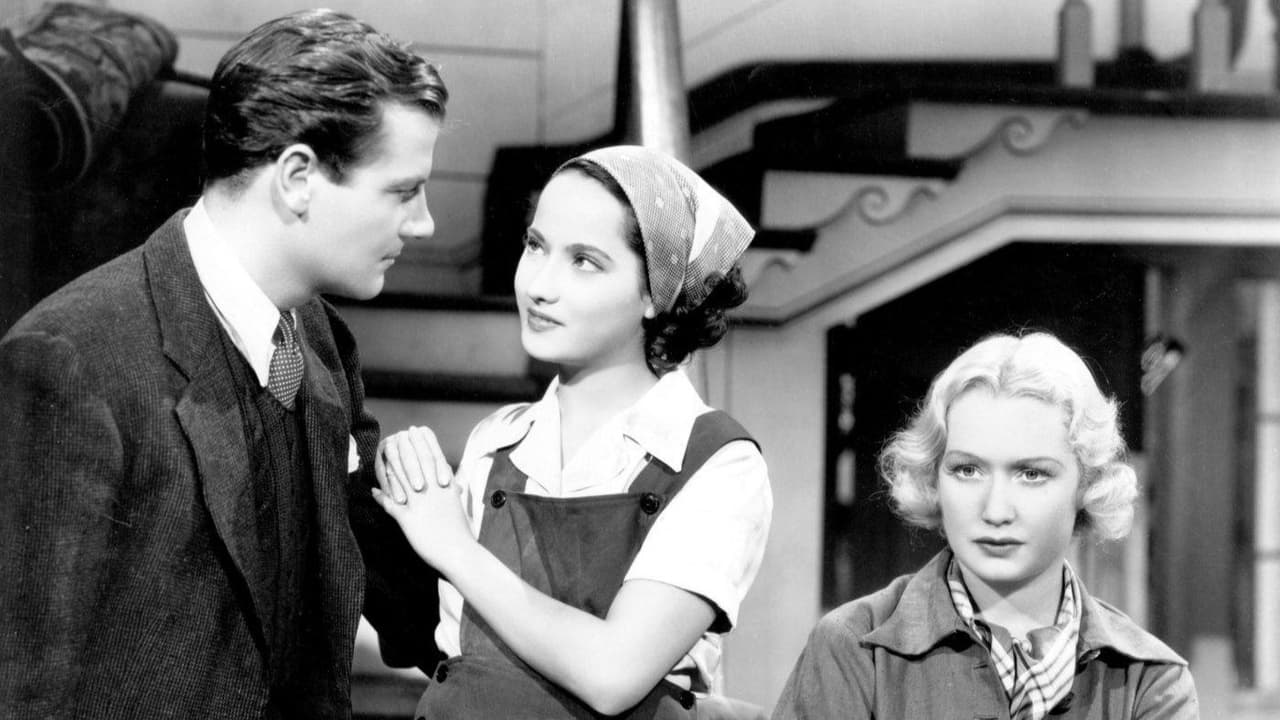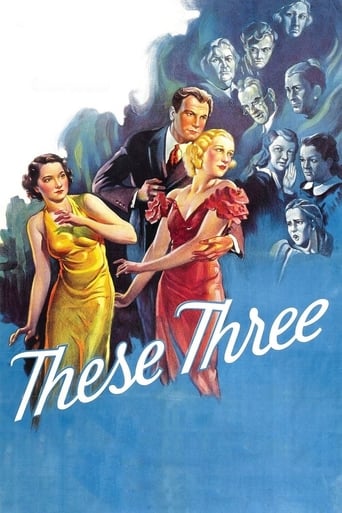

Best friends Karen Wright and Martha Dobie graduates from college. They decide to turn Karen's late grandmother's farm into a girls' boarding school. They are shocked to find the rundown farmhouse and they work to fix it up. Karen is dating amiable local doctor Joe Cardin although Martha does have a crush on him. Martha is confronted by her flighty aunt about her crush and one night with Joe in her room. After Karen punishes troublesome student Mary Tilford, she brings it all to a boil after running back to her grandma and spreading some ugly gossip.Lillian Hellman reworks her 1934 play The Children's Hour into something just as juicy. The lesbian rumor could never be brought to the big screen at the time. While it's not quite the same, it still packs a punch in this emotional drama. Mary's cruelty is as devastating as ever. The last act gets reworked and it struggles to find the happy ending. There are a few stumbles in that last act as it rushes to wrap up. It should have ended with the three leaving the home behind without getting their vindication. That would have been a solid eight.
... View MoreTwo friends (Miriam Hopkins and Merle Oberon) open up a school to teach young girls. Along the way Oberon falls for a handsome young doctor (a ridiculously pretty Joel McCrea). Unfortunately there's an evil young woman in school (Bonita Granville) who spreads a lie saying that Hopkins and McCrea are lovers behind Oberon's back...and their lives are destroyed.Cleaned up version of "The Children's Hour" by Lillian Hellman. In the original play the two women were accused being lesbians...but that couldn't be done on the screen in 1936 so they turn it into a love triangle. The play was filmed faithfully in 1962 by the same director. Still this movie is very good on its own. The dialogue is almost identical to the play with minor changes. The acting is great, it moves very quickly, McCrea is impossibly handsome and it just draws you in. Well-directed too. The 1962 version (under "The Children's Hour" title) is good too but this is well worth seeing. Recommended.
... View MoreThis comment may contain general spoilers.I swear this has to be the BEST child acting i've ever seen in a classic film in years, and i watch so many classics it's ridiculous. Sure, Mickey Rooney was a capable actor but sometimes I feel he IS acting. With the children in These Three, I was dumbstruck. William Wyler had his hands full w/ child actors in this film and Kudos w/ a capital K to Bill for pulling the best out of everyone.Bonita Granville as Mary Tilford does a mind-blowing job grasping a tremendously dramatic role and she did it so believably and without force that her blackmailing threat to Rosalie and the confrontation scene w/ grandmother, and bulk of cast, I got goosebumps. She carried the part very much like Bette Davis in Of Human Bondage in her famous "wipe my mouth" scene. She did the scene so delicately, so conniving, with such convincing facial expressions and tonal inflections that I was spellbound. Marcia Jones as Rosalie was quite good herself to the point it makes me wonder what the poor girl was threatened with before the scene was shot.I must say, too, that it is great to see Merle Oberon using her face in a way that doesn't make her look demented such as in Wuthering Heights. It was great to see her more natural, less possessed looking w/ her eyes. In this movie, she definitely was reeled in quite a bit and i credit Wyler for that. Miriam Hopkins was as beautiful, soulful and sad as ever.Overall, I believe the child actor Bonita Granville stole the entire film, but I could feel Marcia's fear of her secret being discovered and punishment to ensue. I could feel Miriam's longing and Merle's calm sense of decency. As I said before, William Wyler managed to get performances that were spot on for the film, keeping the tone, believability and atmosphere as convincing as films of the 30s could be.The cinematography was done very well, and Gregg Toland, who had his life cut short at 44, was very much a master of lighting and unique camera angles. A feeling of intimacy was established in a lot of the scenes in ways I can say I've never seen shot before. The 3 leads, standing in Ms. Tilford's living room on the day they go to find out what the issue is, standing side by side, and Toland puts the camera behind them. That little subtle angle conveyed so much emotionally that i'm surprised it wasn't mimicked over and over by every DP worldwide. He went on to DP such greats as Intermezzo, Citizen Kane, Little Foxes, and more, where his influential yet extremely subtle camera and lighting from These Three was turned on it's head, showing his extreme versatility.This is a great film, especially for it's era. I'm a harsh critic, so I give it a 6.
... View MoreIn Lillian Hellman's original play, THE CHILDREN'S HOUR, the scandal involved lesbianism--certainly NOT a topic they were allowed to address in Hollywood in the strengthened Production Code era. Starting around 1935, Hollywood bowed to pressure to clean up the movies and feature more wholesome images. While today some see this as a totally negative thing, you must understand that nudity, violence, crudeness and very adult topics were frequently used in films and there was no rating system. So, kids might go to the theaters and see rather graphic nude swimming scenes (TARZAN AND HIS MATE and BIRD OF PARADISE are good examples) or Frank McHugh giving someone "the finger" (PARATROOPER). As a result, SOME sort of system needed to be created, though I will admit some of the resulting products from Hollywood were a bit bland. In regard to THE CHILDREN'S HOUR, there was no way the studios would be allowed to discuss homosexuality during this era, so they changed the allegations to promiscuity between a man and a woman. This did NOT appreciably alter the play nor its impact and reportedly Miss Hellman was happy with the film despite this minor change--minor in that it resulted in only minor alterations to the script and kept the overall message intact.The resulting film, THESE THREE, was produced by David O. Selznick, directed by William Wyler and starred Miriam Hopkins, Merle Oberon and Joel McCrea. With this terrific combination of talents and the Hellman script, it certainly isn't much of a surprise that the film was excellent throughout--and one of the better pictures of the 1930s. About the only negative at all about the play was the performance of young Bonita Granville. While generally very good (earning her an Oscar nomination), it was at times also a tad over-the-top--and she acted so histrionic that you wonder what sane person would believe all of her lies!!! If this had been toned down just a bit (making her a little more subtle), the film would have earned a 10. As it is, it's still a terrific film with an original and wonderful script.
... View More